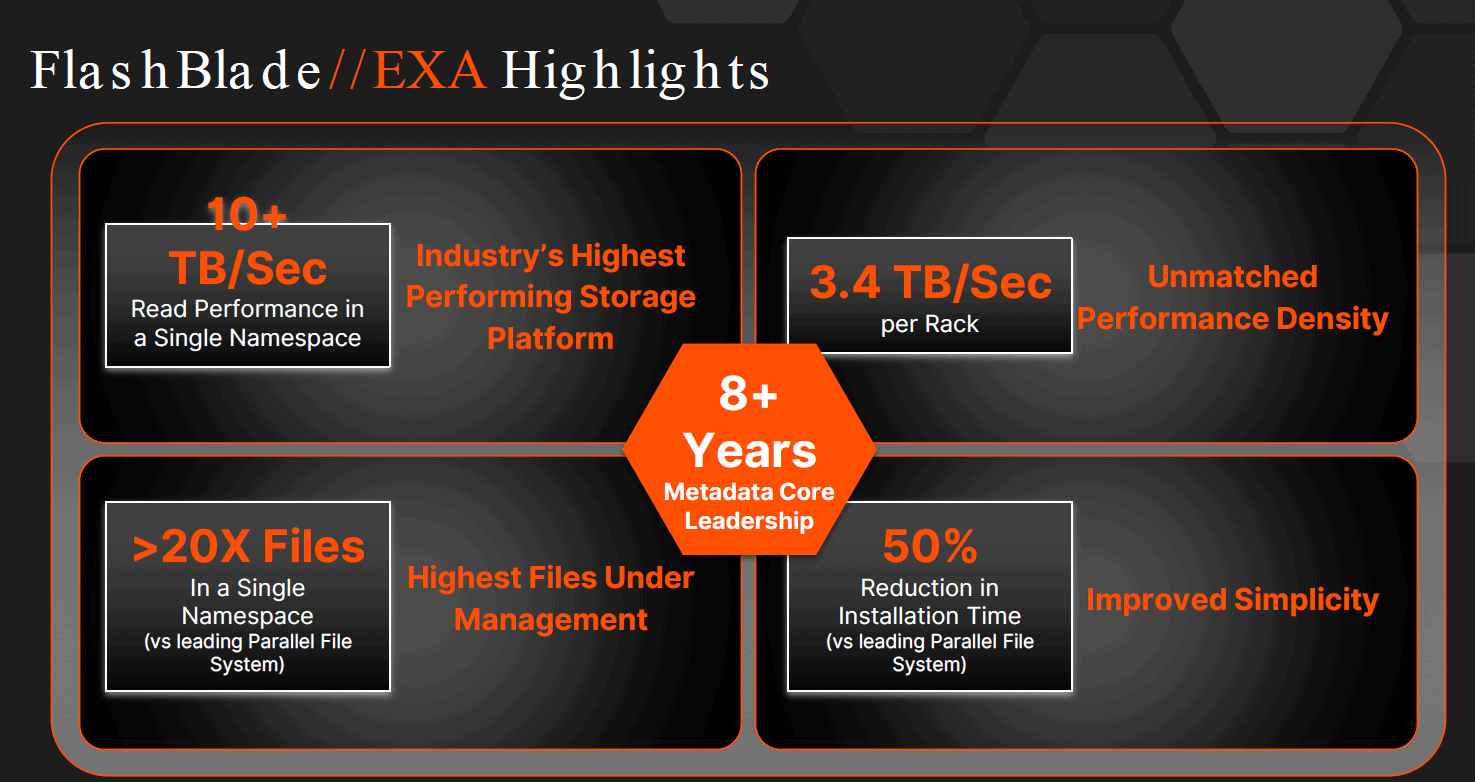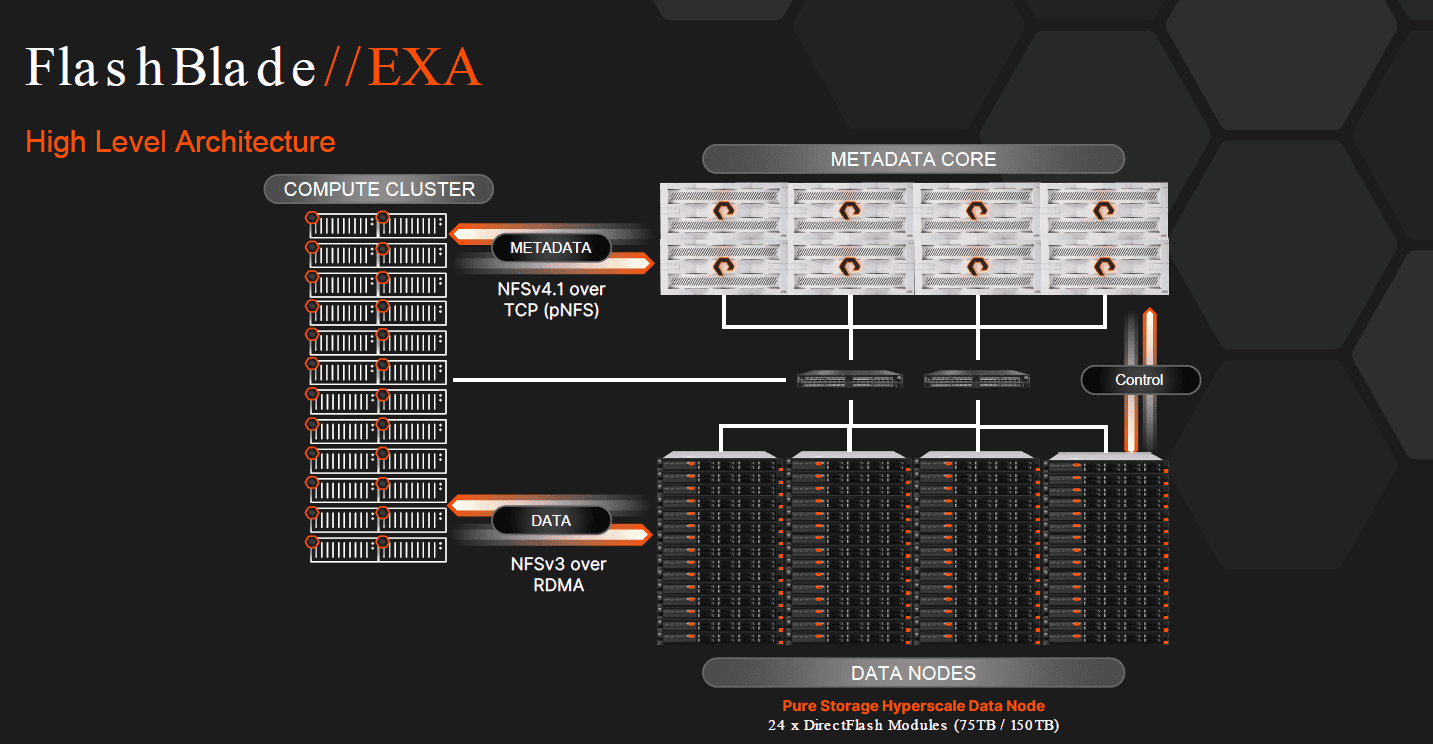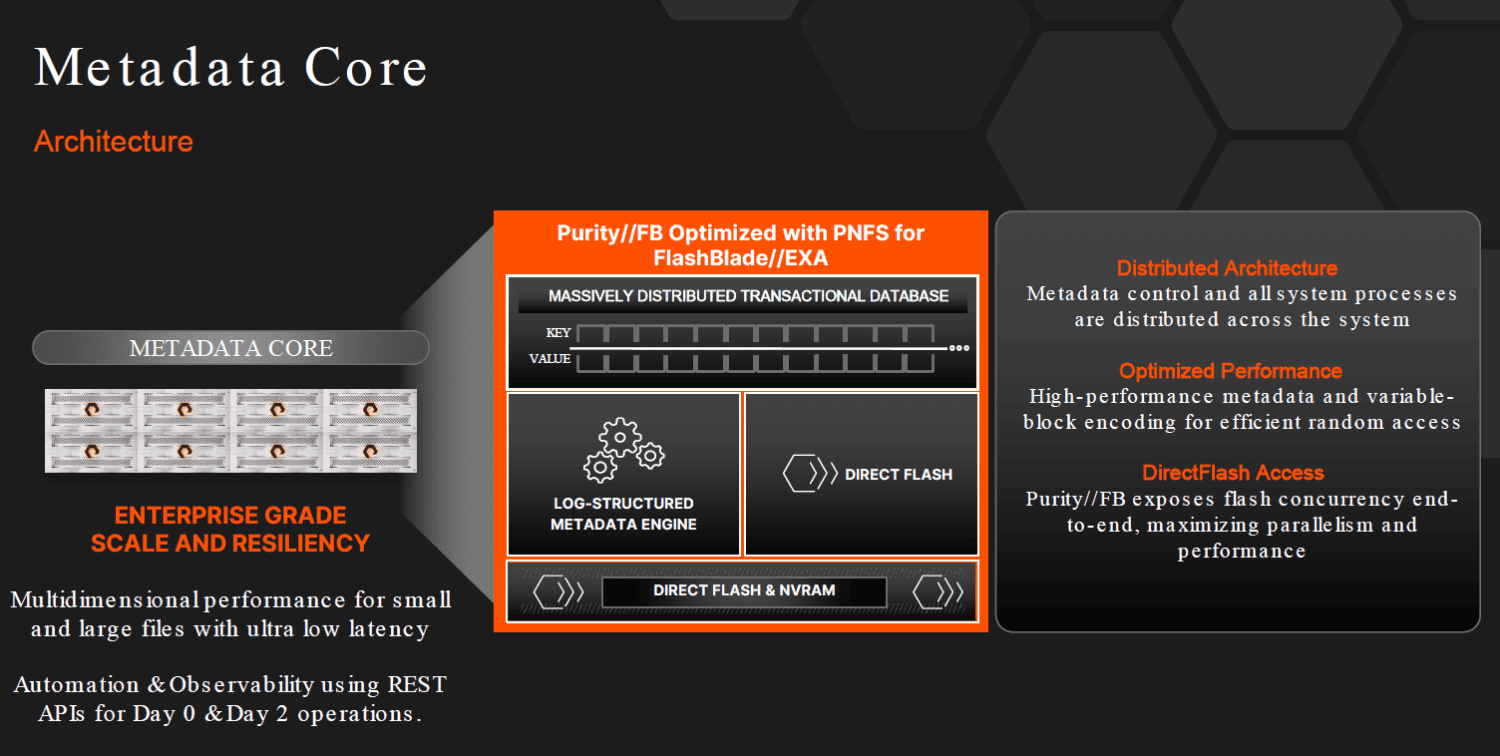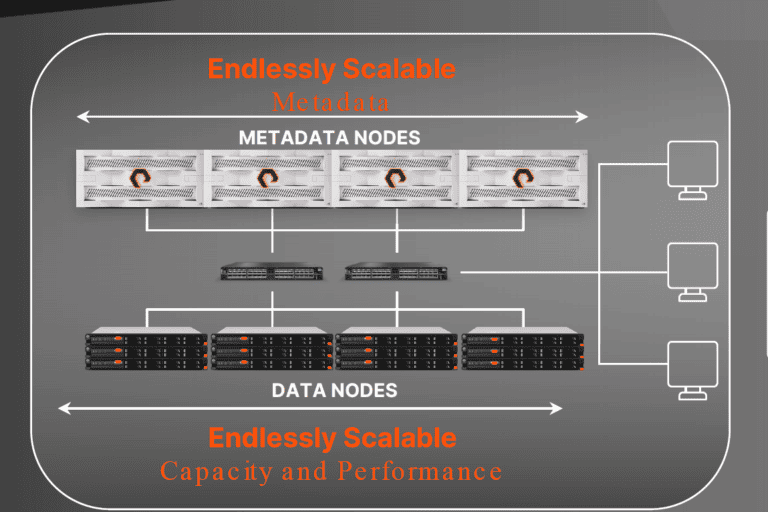Traditional storage environments are not necessarily created or targeted to support modern AI and/or HPC workloads. Indeed, they can cause precious GPU cycles to be lost simply because the storage can’t keep up. Pure Storage aims to put an end to this with the announcement of FlashBlade//EXA.
With FlashBlade//EXA, Pure’s scale-out platform gets a third member, in addition to FlashBlade//S and FlashBlade//E. Pure is apparently keen to make the high performance of the new offering clear. It could have chosen to come out with a FlashBlade//X in parallel with the FlashArray naming convention (i.e. there is a FlashArray//X, besides FlashArray//S and FlashArray//E). It clearly chose otherwise. In any case, it is now clear that this version of FlashBlade is very powerful, given the rather explicit reference to exascale computing.
FlashBlade//EXA is focused on AI Factories
If we restrict ourselves to AI environments for a moment, they can be roughly divided into three categories. At the top are hyperscalers, at the bottom there’s enterprise AI. In the middle are the use cases that fall under the umbrella of the AI Factory. Examples include HPC labs and research centers, GPU clouds and highly sophisticated large enterprises. That’s the category Pure Storage is targeting with FlashBlade//EXA.
In a briefing on this news we received from Marco Bal, Principal Systems Engineer Benelux at Pure, he puts some numbers on the different categories for convenience. Looking purely at the throughput of systems in those environments, enterprise AI environments are fine with speeds of up to 1 terabytes per second. Hyperscalers, on the other hand, need more than 50 terabytes per second. AI Factories are in between those two, so between 1 and 50 terabytes per second.

Pure claims at launch that FlashBlade//EXA is the best-performing storage platform on the market today. It can handle 10 terabytes per second in a single namespace. Per rack, this equates to 3.4 terabytes per second. Now, we don’t have all the performance figures of all vendors handy, and Pure will most likely also have chosen the most favorable outcomes, but 10 TB/s is definitely a rather impressive performance. Mind you, these are initial test results. However, Pure expects to continue to live up to them.
FlashBlade//EXA is disaggregated and multi-modal
Looking briefly under the hood of Pure’s new FlashBlade//EXA platform, we see a modern storage architecture there. Today, that means, first of all, that it is disaggregated. That is, metadata and “real” data can communicate with the compute department of an AI stack separately from each other. Metadata and data can then also scale separately from each other. In theory, this should provide virtually infinite scalability.

FlashBlade//EXA is in fact the so-called Metadata Core of the architecture. Pure has fully optimized FlashBlade to handle metadata massively parallelized. The other storage component, the Data Node, where the actual data resides, consists of standard off-the-shelf nodes. Bal does add during our conversation that after general availability of FlashBlade//EXA, Pure plans to replace these with Pure’s Hyperscale Data Nodes, DFMs (Direct-Flash Modules) of 75 or 150 TB.

Besides disaggregated, it is also important to note that FlashBlade//EXA is multi-modal and multi-dimensional. That means that it is suitable for all types of data, where it doesn’t matter if the files are small or large, or it has to handle random or sequential data. This is important because different types of AI use different types and formats.
All of this, combined with the Purity operating system that also obviously runs on this, should make possible the claim from the subhead at the top of this story, made by Pure-CTO Rob Lee. Of course, whether storage will actually set the pace for AI and HPC innovation remains to be seen. There will undoubtedly be some marketing in that statement as well. In itself, that doesn’t really matter. As long as FlashBlade//EXA can keep up with the GPUs and the network, that means that storage is no longer an inhibitor. If Pure can deliver on that, it has already succeeded.
FlashBlade//EXA will most likely become generally available in the summer of 2025.
Also read: R&D is the lifeblood of Pure: a peek behind the curtains
